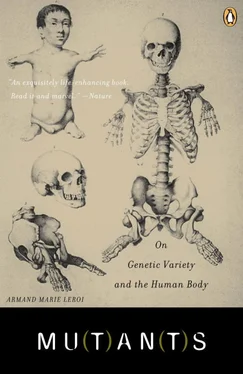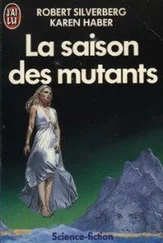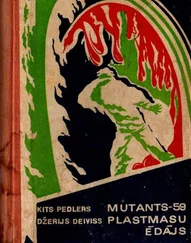
CONJOINED TWINS: PARAPAGUS DICEPHALUS DIBRACHIUS. FROM B.C. HIRST AND G.A. PIERSOL 1893 HUMAN MONSTROSITIES.
One man who thought deeply about the conjoinedness of conjoined twins was Étienne Geoffroy Saint-Hilaire. In 1829 Geoffroy was Professor at the Muséum d’Histoire Naturelle, and next to Cuvier (his colleague and bitter rival) the most important anatomist in France. Geoffroy’s disciple Étienne Serres had written the monograph describing Ritta and Christina Parodi’s autopsy; Geoffroy’s son, Isidore, had organised the event. It is upon Isidore that suspicion falls for having bullied the Parodis into surrendering the corpse.
Geoffroy père was one of the most mercurial intellects of his time: almost everything he wrote has a touch of genius and a touch of the absurd. He was one of nature’s romantics: ostensibly a descriptive anatomist, he investigated the devices by which puffer fish inflate themselves, but did not shy away from larger problems, such as the relationships between the ‘imponderable fluids’ of the universe (light, electricity, nervous energy, etc.), his deductive theory of which never saw print. More reasonably, Geoffroy was also keenly interested in deformity. It is in his hands that teratology first really becomes a science.
In 1799 Geoffroy was among the savants that Napoleon Bonaparte brought to Egypt in his futile attempt to block England’s route to the East. Geoffroy spent his Egyptian sojourn (cut short by the arrival of the British) collecting crocodiles, ichneumons and mummified ibises. Egypt also gave him a way of making ‘monsters’ to order. Geoffroy was a staunch epigeneticist. If monsters were caused by accidents in the womb, he reasoned, it should be possible to engineer them. Since time immemorial, the peasants of the Nile valley had incubated chicken eggs in earthenware furnaces fired by burning cow-dung. Inspired by this, Geoffroy established a similar hatchery where he systematically abused developing eggs by shaking them around, perforating them, or covering them in gold foil. The resulting chicks were mostly more dead than deformed, but some had bent digits, odd-looking beaks and skulls, and a few lacked eyes – unspectacular results, but enough to convince Geoffroy that he had definitively slain preformationism.
From monstrous chickens to monstrous humans was an easy leap and, starting in 1822, Geoffroy published a string of papers on deformed infants, which he classified as zoologists classify insects. A child whose head was externally invisible belonged, for example, to the genus Cryptocephalus . He realised that his ‘genera’ were not specific to humans: dogs, cats, perhaps even fish, could be deformed in the same way; his classification transcended the scale of nature. A few years later Isidore elaborated his father’s classification into a system that is still, with some modification, used by teratologists today, one in which Ritta and Christina, and children like them, are known as ‘Xiphopages’ to the French and ‘parapagus dicephalus tetrabrachius’ (side-joined, two-headed four-armed) conjoined twins to everyone else.
Étienne Geoffroy Saint-Hilaire’s greatest contribution to teratology was, however, the realisation that deformity is a natural consequence of the laws that regulate the development of the human body. Moreover, looked at the right way, such deformed infants can reveal those laws. This, of course, is a very Baconian idea – and in one of his more philosophical tracts the anatomist speaks warmly of the genius of James I’s Lord Chancellor.
Nowhere, for Geoffroy, were those laws more clearly revealed than in conjoined twins. Even before seeing Ritta and Christina Parodi in 1829, he had dissected a number of conjoined twins. Conjoinedness, he argued, was simply a reflection of what normally happens in a single embryo. The organs of an embryo develop from disparate parts that are then attracted to each other by a mysterious force rather like gravity. The intimacy of conjoined twins is caused by this same force, but misapplied so that the parts of neighbouring embryos fuse instead to one another.
Geoffroy was deeply enamoured of this deduction and, in the positivist fashion of his day, made a law of it: le loi d’affinité de soi pour soi – the law of affinity of like for like. In the monograph that Étienne Serres wrote on Ritta and Christina’s dissection, fully the first half is devoted to the soi pour soi and a few other laws of Serres’s own devising. Geoffroy regarded the soi pour soi as his greatest discovery, and in later years elevated it into a fundamental law of the universe, not unlike Goethe’s notion of ‘elective affinities’ to which it is related. This hubristic vision has ensured that the soi pour soi is, today, quite forgotten. This is a pity, since although Geoffroy’s law is unsatisfactorily vague, and wrong in detail, it conveys something important about how human embryos are built. It was the first scientific explanation of connectedness.
Eighteen days after conception the embryo is just a white, oval disc about a millimetre long. It has no organs, just three tissue layers and a geometry. Even the geometry is largely virtual: a matter of molecules that have been ordered in space and time, but not yet translated into anything that can be seen without the special stains that molecular biologists use. Within the next ten days all this will have changed. The embryo will be recognisably an incipient human – or at least some sort of vertebrate, a dog, a chicken or perhaps a newt. It will have a head, a neck, a spinal column, a gut; it will have a heart.
The first sign of all this future complexity comes on day 19 when a sheet of tissue, somewhat resembling the elongate leaf of a tulip, forms down the middle of the embryo above the primitive streak. The leaf isn’t entirely flat: its edges show a tendency to furl to the middle, so that if you were to make a transverse section through the embryo you would see that it forms a shallow U. By the next day the U has become acute. Two more days and its vertices have met and touched in the middle of the embryo, rather as a moth folds its wings. And then the whole thing zips up, so that by day 23 the embryo has a hollow tube that runs most of its length, the nature of which is now clear: it is the beginnings of the mighty tract of nerves that we know as the spinal column. At one end, you can even see the rudiments of a brain.
Even as the nerve cord is forming, the foundations of other organs are being laid. Small brick-like blocks of tissue appear either side of incipient nerve cord, at first just a few, but then ten, twenty, and finally forty-four. Made of mesoderm, they reach around the neural tube to meet their opposite numbers and encase the neural tube. They will become vertebrae and muscles and the deepest layers of the skin. Underneath the embryo the endoderm, which embraces an enormous, flaccid sac of yolk, retracts up into the embryo to become the gut. As the gut shrinks the two halves of the embryo that it has previously divided are drawn together. Two hitherto inconspicuous tubes, one on either side, then unite to make a single larger tube running the length of the embryo’s future abdomen, an abdominal tube that echoes the neural tube on its back. Within a few days this abdominal tube will begin to twist and then twist again to become a small machine of exquisite design. Though it still looks nothing like what it will become it already shows the qualities that led William Harvey to call it ‘the Foundation of Life, the Prince of All, the Sun of the Microcosm, on which all vegetation doth depend, from whence all Vigor and Strength doth flow’. On day 21 it begins to beat.
Читать дальше













